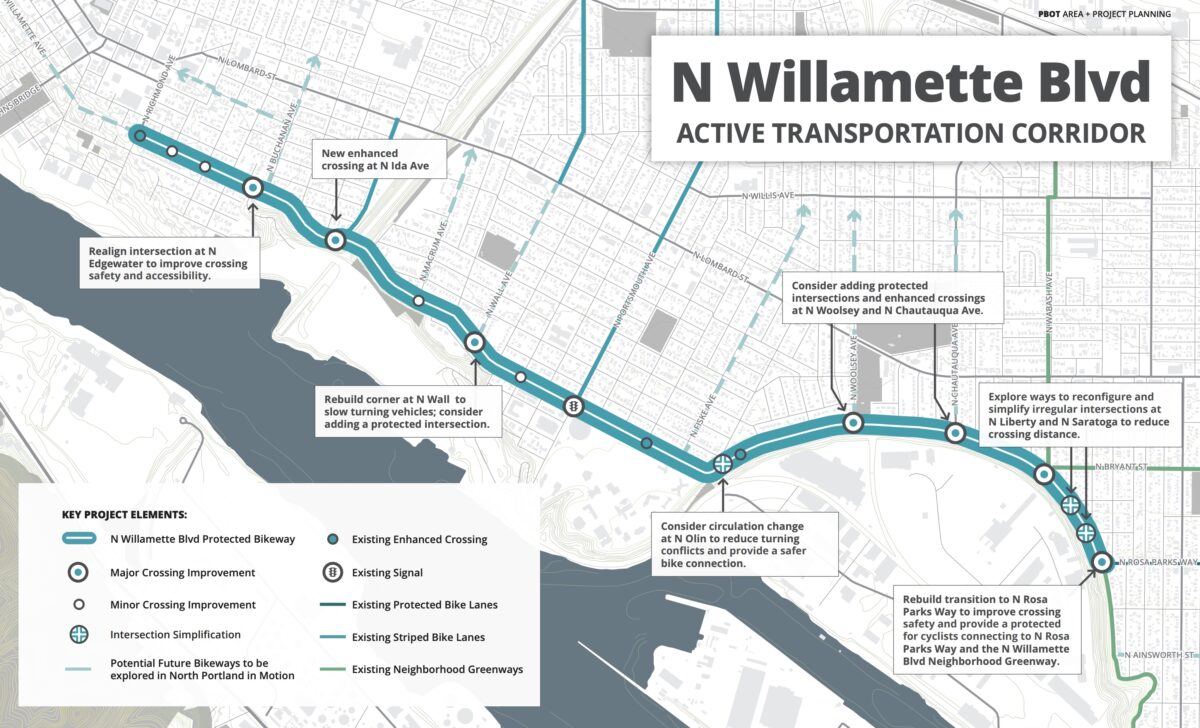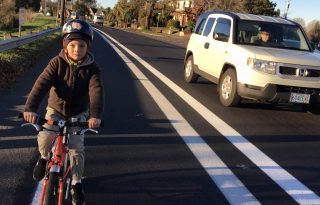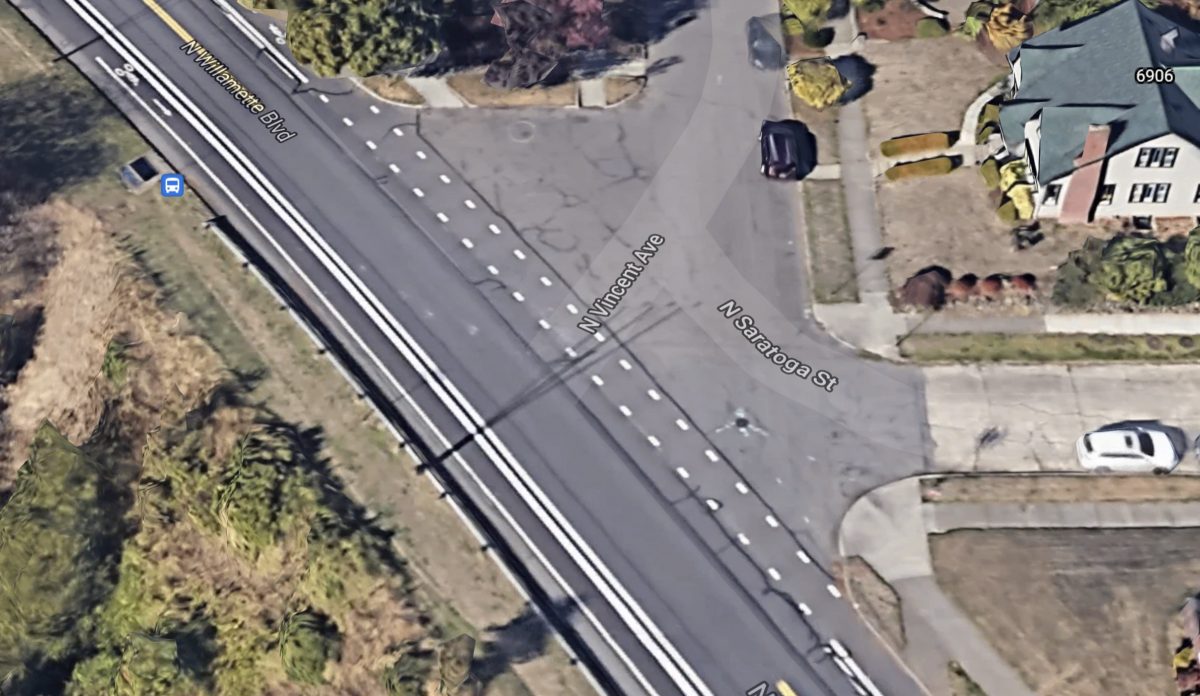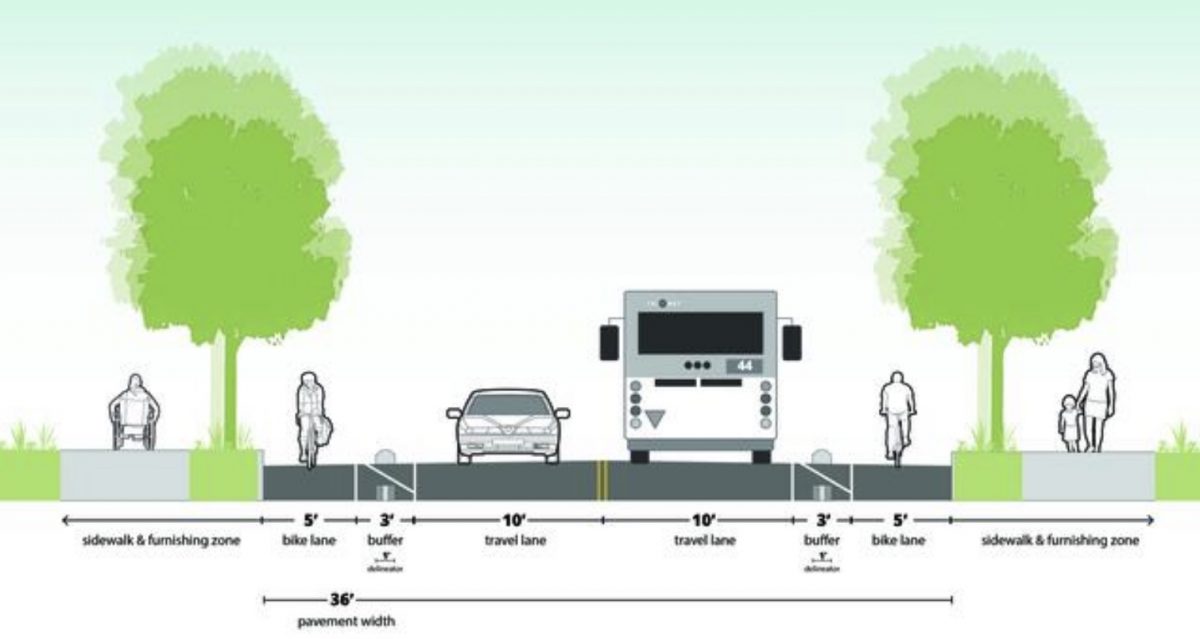
One of north Portland’s most important bikeways is poised for major upgrades.

(Photo: J. Maus/BikePortland)
The Portland Bureau of Transportation has launched the Willamette Boulevard Active Transportation Corridor project, which will invest $6 million to update three miles of the street between North Rosa Parks Way and North Richmond Avenue. The project, funded with federal sources via a Metro “regional flexible funds” grant in 2019, will widen and add protection to existing bike lanes and fill gaps where no bike lane exists today.
In addition to better bike lanes, the project will make comprehensive changes to the street that will make it safer and less stressful for all users. Initial plans call for more marked crossings, a lower speed limit (from 30 mph to 25 mph), treatments to simplify and neck-down expansive intersections, bus stop changes, and more. PBOT says their goal is to improve walking, biking and transit and build a “world-class multimodal corridor.”
Advertisement


Once complete, this section of Willamette will connect to new protected bike lanes on North Rosa Parks Way and North Greeley Avenue and create a continuous safe bikeway from the Lower Albina area near Interstate Avenue to St. Johns (via Greeley/Willamette), and from Martin Luther King Jr. Blvd to St. Johns (via Rosa Parks Way/Willamette).
PBOT widened the Willamette Avenue bike lanes between Rosa Parks Way and Columbia Park in 2017 as part a repaving project, but unfortunately left them unprotected. The new project will widen the bike lanes even further and add physical protection (likely in the form of concrete curbs, but final design is still up for debate).


According to initial designs shared by PBOT (above), the southern section of the project (where Willamette is 40-feet wide) will have bike lanes that are seven-feet wide with a three-foot buffer zone. This 10-feet for cycling (and other forms of non-car, personal mobility), would be the same space given to car users, who will have one 10-foot lane in each direction. When the road narrows slightly at N Edgewater Avenue (Cathedral Coffee), the bike lane would narrow to eight feet (five usable feet with a three-foot buffer) and the driving lanes would remain at 10 feet all the way north to Richmond.
“PBOT is excited to have the opportunity to make a major investment to support walking, biking, and transit and build a world-class multimodal corridor in North Portland.”
Currently, bicycle riders have only standard, unprotected and unbuffered bike lanes between N Woolsey (Columbia Park) and Ida (just past “the cut”). The bike lanes abruptly stop north of Ida to Richmond. In November 2018 a man was hit and killed on this stretch of Willamette without a bike lane.
As the primary cycling connection to the St. Johns Bridge, Willamette serves a very high volume of riders. It’s designated as a Major City Bikeway and Major City Walkway in the city’s cycling and pedestrian master plans respectively.
To create room for the bikeway, PBOT will prohibit on-street vehicle parking for the entire length of the project. PBOT says the on-street parking is currently not heavily used, there’s “ample space” on side streets and/or alleyways, and nearly every property on the corridor has a private driveway. Even so, PBOT will be prepared for opposition to any changes to auto parking access. When plans for better bike lanes on this section of Willamette first emerged in 2011, irate property owners forced PBOT to delay the project.
In 2018 a group of Portland State University Masters of Urban Planning students completed a report that included this section of Willamette. After months of outreach to the community, the authors of North PDX Connected found that, “Participants were very concerned about the speed and volume of cars. There are too few safe places to cross N Willamette Blvd, biking in current conditions and facilities is unsafe and uncomfortable, and neighborhood through traffic endangers residents.”
PBOT will kick off a public review and feedback process in the coming months of this year with a goal of creating a final recommendation in 2022. Construction will take two years and is expected to be complete by 2027.
— Jonathan Maus: (503) 706-8804, @jonathan_maus on Twitter and jonathan@bikeportland.org
— Get our headlines delivered to your inbox.
— Support this independent community media outlet with a one-time contribution or monthly subscription.
